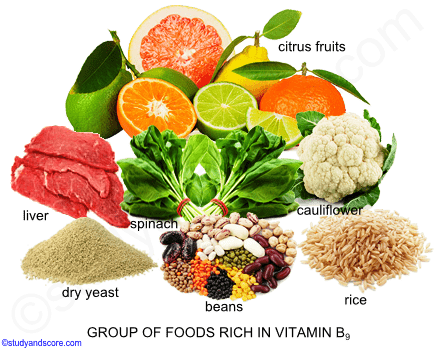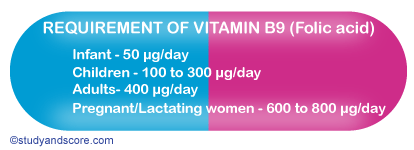Vitamin B9 was discovered in 1941 by Henry Mitchell. It was isolated in 1941 and named folic acid. The name comes from “folium,” which is the Latin word for leaves (because it was first isolated from spinach).
Folic acid helps the body make healthy new cells. It contains a pteridine group linked to para amino benzoic acid and l-glutamic acid. It is slightly soluble in water and stable to heat.
Folic acid is particularly present in Beans, Legumes, Cereals, Rice, Citrus fruit, Spinach, cauliflower and dried yeast. Egg, liver and kidneys are rich animal sources.

There is no definite requirement for normal human being. However, an increased amount is required during pregnancy and lactation.

Absorption of folic acid takes place along the whole length of the mucosa of the small intestine. Folic acid about 5-15 mg/g is in the liver and folate is also incorporated into the erythrocytes during erythropoiesis (Red blood cells production).
Deficiency of vitamin B12 also leads to functional folic acid deficiency.
The following are the functions of Folic acid
- Share with your friends! -
Login to post your comment here...
- or with social Account -